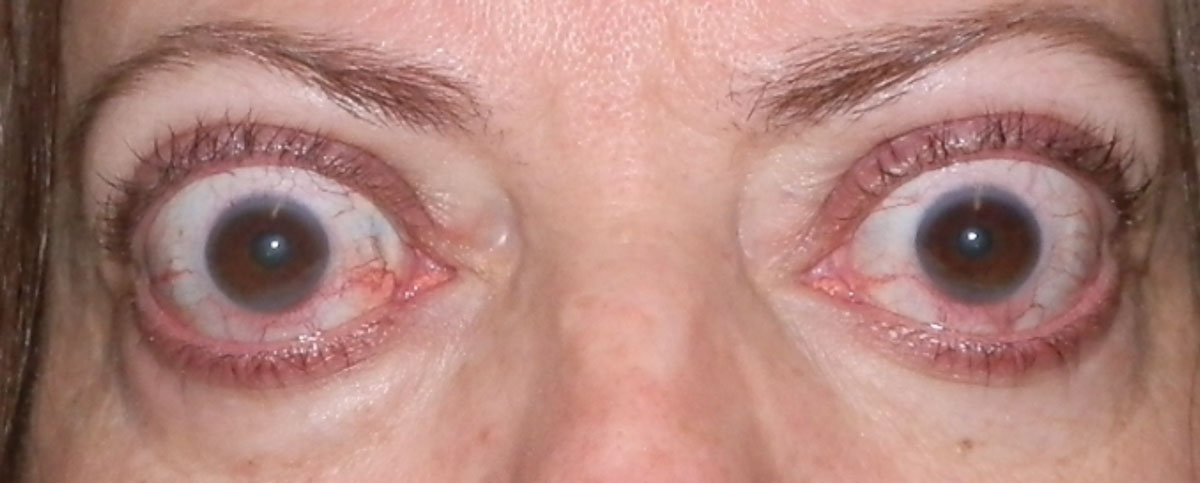 |
| Thyroid eye disease was noted to have younger ages of peak prevalence for Asian, Hispanic and Black patients. Photo: Bobby Saenz, OD, MS. Click image to enlarge. |
The most common orbital disorder in North America, thyroid eye disease (TED) is frequently associated with autoimmune thyroid disease and Graves’ disease. A recent study published in the American Journal of Ophthalmology evaluated TED prevalence and associated factors within a large national clinical registry. The research team identified several novel observations, including a unimodal rather than bimodal age distribution for TED prevalence and significant variations in TED prevalence and peak age prevalence by race and ethnicity. TED prevalence was highest in Black/African American patients—a finding not previously reported to the researchers’ knowledge—and lowest in Asian and Hispanic patients. The team also found younger ages of peak prevalence in Black/African American, Asian and Hispanic patients compared with Caucasian patients.
Using data from the American Academy of Ophthalmology’s Intelligent Research in Sight (IRIS) Registry, the study estimated TED prevalence and the frequency of its vision-threatening manifestations and evaluated associated factors (e.g., age, gender, ethnicity, smoking) in the large population of ophthalmology patients from practices across the United States included in the Registry. A total of 41,211 TED patients were identified.
TED prevalence was 0.09%, showed a unimodal age distribution (highest prevalence in ages 50 to 59 [0.12%]), higher rates in females than males (0.12% vs. 0.04%) and in non-Hispanics than Hispanics (0.10% vs. 0.05%). Prevalence differed by race (from 0.08% in Asians to 0.12% in Blacks/African Americans), with varying peak ages of prevalence.
Factors associated with TED in multivariate analysis included age, race, female sex, smoking status and type 1 diabetes. The associations with female sex, smoking and type 1 diabetes were consistent with prior studies based on smaller, clinically based homogenous groups of patients. The researchers believe these findings help support the generalizability of the IRIS Registry data for such investigations.
“The significant variation in prevalence of TED by gender, race and ethnicity in the IRIS Registry suggests the importance of considering racial, ethnic and geographic heterogeneity in the interpretation of prior studies with more homogenous populations,” the researchers wrote in their paper. “This epidemiologic profile of TED in the United States can help physicians in the counseling and management of patients who present with autoimmune thyroid disease and raises novel questions about the underlying pathogenesis of TED in different populations that are worthy of future investigation.”
Ramesh S, Zhang Q, Sharpe J, et al. Thyroid eye disease (TED) and its vision threatening manifestations in the Academy IRIS Registry: 2014-2018. Am J Ophthalmol. May 16, 2023. [Epub ahead of print]. |


